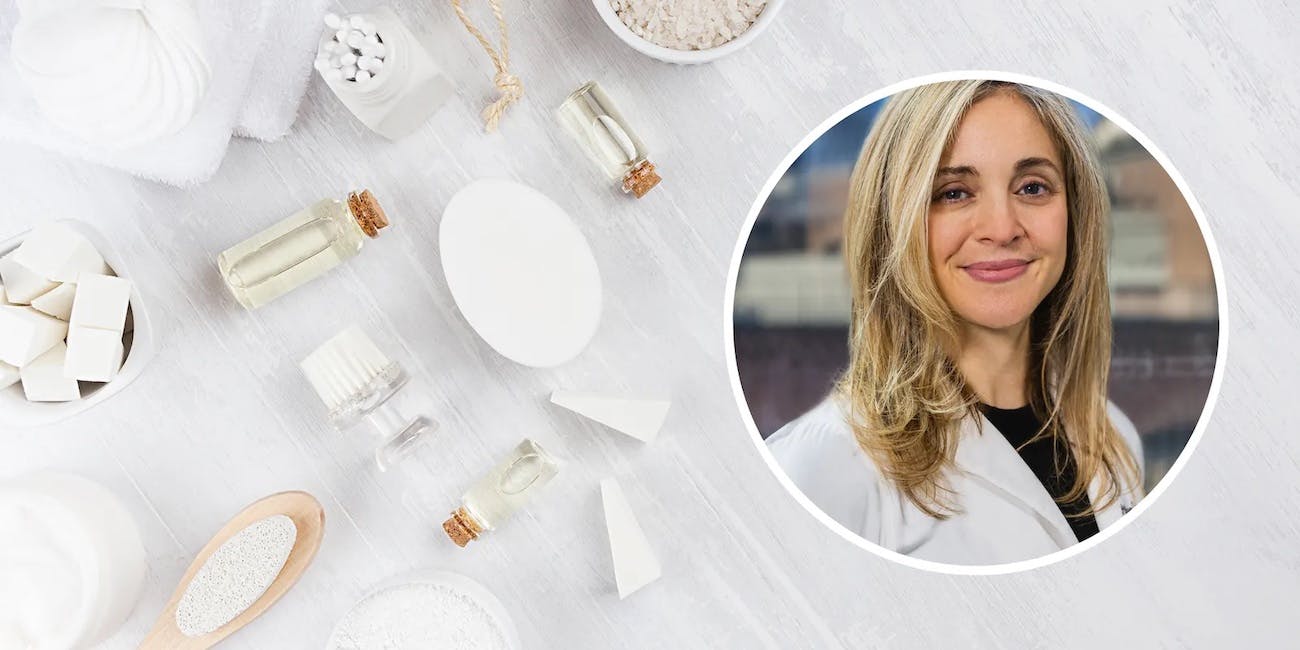Summer heat means it's time to update your skincare routine!

Welcome to the Dr. B Newsletter, a curated weekly healthcare email that cuts through the noise to deliver vetted reads on Covid-19 and beyond. With much of the country riding a climate change-induced heat wave, you might be wary of hitting the beach. Sunstroke aside, it’s always smart to show summer skin extra TLC. Coming up, we’ve got a history of tanning trends, Dr. B pro tips, and the 411 on UVF clothing. Now let’s chill with…
- The Checkup: stay sunny + safe during scary times
- Sun’s Up: history + top tips + fashionable finds
- Covid-19: a new vaccine + a wily variant
The Check-Up:
- How to recognize + stop heat stroke symptoms
- Women truckers have a lot to teach about solitude
- Health inequities increase Black + Indigenous overdoses
- Most of us get these 3 abortion myths wrong
- Try this 4-ingredient “recipe” for getting things done
- This new film = Hollywood representation goals!
- What you should know about the monkeypox virus
- A doc explains the recurrence of polio in the U.S.
- 3 (scary!) reasons to avoid farmed salmon
- Please make us these no-bake vegan desserts
Tanning + time

Those who love the summer sun face a conundrum. Current heat waves make it dangerous to lounge outside. And UV rays cause skin cancer, so there’s no “healthy” way to get a golden glow. The concept of “tan” is relative, too, as no skin shade reflects a (nonexistent) ideal. But how has tanning threaded through beauty trends of the Western world over time? Let’s take a quick look back.
Statue skin. Fairness was all the rage for much of western history. Alabaster skin implied you didn’t have to work in the sun as did serfs or slaves. Sun bonnets and parasols speckled Elizabethan fashion trends. And some women used foundations made of white lead (!) and drew blue veins on their arms to amp up the effect.
The industrial revolution. Factories moved the working class inside. Scientists recognized sunlight as crucial for treating rickets and tuberculosis. Yet wealthy women continued to shirk its touch, using Elizabeth Arden’s skin bleach to banish “summer blemishes.”
The roaring 20s: Rebellious flappers tossed corsets and embraced debaucherous pleasures like drinking and sunbathing. In 1923, Coco Chanel returned from the French Riviera a glowy bronze. Recognizing the appeal, fashionable followers brought us to…
A faux glow: New tanning oils from L’Oréal and Coppertone promised to speed up the sun’s process. Then in the 1950s, medical researcher Eva Wittgenstein discovered that dihydroxyacetone (DHA) stained patients’ skin but not clothes. Man-Tan, Sudden Tan and Coppertone's Quick Tan jumped on using DHA in self-tanning creams. Smelly and unreliable, they generally did the job. DHA is still used in self-tanners today.
1960s-1970s: Color television and affordable commercial air travel spurred the Mediterranean look. Hollywood hottie Marlon Brando, the first Sports Illustrated swimsuit issue in 1964, and Malibu Barbie’s 1971 debut all signified an unstoppable beach-blown trend.
Tanning bed times: Tanning salons were the fastest growing business in the U.S. by 1987. In 1988, Mystic Tan promised even coverage through the first standing spray machine. And into the early aughts, tanning beds were a quick solution especially amongst non-Hispanic white women. But we soon learned they shortcut the time UV rays cause skin cancers and other risks. So they’re now illegal for people under 18 in many states.
Today: “Laying out” is a summer pastime not going anywhere soon. But most of us protect our skin with a trusted sunscreen and use fake tanning products to make up the gap. Need advice on how to get a sun-kissed glow? Devotees like J.Lo and Gigi Hadid share their secrets. And this year’s top trending products are streak-free standbys.
Love the skin you're in!

Did you know that Dr. B has an amazing board-certified dermatologist on our team of medical advisors? Alison Gruen, MD has over 20 years of experience guiding us to healthy, beautiful skin. So we knew she was the one to ask for advice.
Here are her top skincare tips:
Observe: I give my patients a simple rule. Take a look at your body. Ask yourself: Is this the only spot that looks like it does? Does this spot look out of place compared to its neighbors? (Other moles, beauty marks or freckles?) Has it changed color, size or shape over the last few months? If so, make an appointment with your dermatologist.
Ask: See your dermatologist annually for a skin cancer screening—twice a year if you have a personal history of skin cancer. Dermatologist's schedules are jammed in the summer because of the misconception that skin cancers appear immediately after sun exposure. But the truth is, we're not gonna know what you did this summer for another 10 years! Come in February, and you’ll spend less time in the waiting room.
Protect: The best way to keep your skin healthy is to minimize excessive sun exposure and not smoke. On an average day, a moisturizer with sunblock is sufficient. In the summer months or in warm year-round climates, choose a lightweight mineral sunscreen—and reapply it. They work best if you wash with a mild cleanser and apply moisturizer immediately afterwards—soak and smear is the derm saying. If you are in your mid-twenties or older, consider adding a retinoid to your nightly regimen. Just keep in mind they take getting used to. Start slowly.
Is UPF clothing legit?

Can summer clothing help keep your skin safe? Yes! UPF marks the ultraviolet protection factor of clothing, giving us an idea of how well a material absorbs, repels or blocks UV rays.
Generally speaking, synthetic fibers like polyester and rayon repel sun better than natural flax or cotton. Dark and bright colors protect better than pale or white. And the more tightly woven the fibers, the less light seeps through. A typical bleached white cotton t-shirt contains UPF of about 5, meaning that 20% of UV radiation passes through. But a shirt made from tightly-woven denim or a wetsuit made from polyester and spandex could have UPF 50, blocking 98%!
No official regulation guarantees a garment’s UPF level. But many brands undergo independent testing. Items with UPF 50+ are excellent. And those with a UPF of at least 30 qualify for The Skin Cancer Foundation’s Seal of Recommendation—an easy way to spot safe purchases. UPF clothing has come a long way from wetsuits and hiking vests. This list of work-casual ensembles, workout clothes and picnic-ready wear is an excellent place to start when ready to shop!
The latest: pandemic
CDC Endorses Novavax COVID-19 Shot for Adults (AP). Health experts hope a new kind of vaccine will lure unvaccinated individuals. The Pfizer, Moderna and Johnson & Johnson vaccines focus on our body’s ability to recognize the coronavirus’ spike protein. The Novavax vaccine injects lab-grown spike proteins to do the job, plus an adjuvant that can encourage immune response. And yes, you still need a booster come fall.
U.S. had the most new COVID cases in latest week as BA.5 continues to spread and signal the pandemic is not yet over (Marketwatch). BA.5 now makes up 78% of current Covid-19 cases—numbers underreported because of a decrease in public testing. BA.5 hasn’t increased deaths amongst vaccinated people (without underlying conditions). But it signals a new wave ahead. Still confused? Check out this informative slideshow.
The Top COVID-19 Hot Spots in the U.S. (US News). As of last Thursday, only 20% of counties across the U.S. were considered to be at a “low” COVID-19 community level. Again, these numbers are likely underreported. But if traveling to another state, click the link above to find out where cases are high. And revisit how to protect yourself outdoors.
Sign up for the free Dr. B newsletter for a weekly report on the latest in healthcare + research-based advice for staying healthy and mentally well.